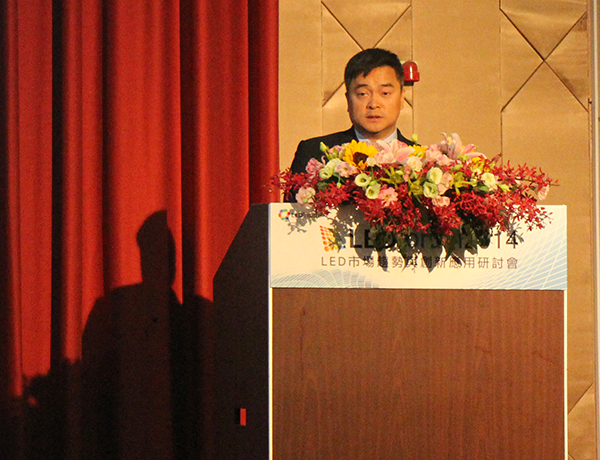Global LED trends show backlight applications are in decline, and that lighting will remain the major market driver, said Sean Zhou, Regional Marketing Director, Asia, Philips Lumileds at LEDforum 2014, which took place Friday in Taipei, Taiwan. In terms of regional market performances, LED market growth in Japan has waned compared to other regions.
LED application market growth trends
LED backlight applications are expected to decline at a CAGR of 5% from 2014 to 2018, Zhou quoted statistics from Pilips MI, Strategies Unlimited. The waning backlight market growth is mostly contributed by display market’s saturated market penetration, and improvements in LED brightness that have resulted in the need for fewer LEDs in backlight, explained Zhou. In contrast, the general lighting market is projected to grow at a rate of 19%, automotive lighting market will grow at 9%, followed by flash 4% during the same period.
For manufacturers the reliability of LED lights is more important than acquiring patents in automotive lighting applications, which have a fairly high market entry level, said Zhou. In automotive lighting market winning car makers trust with reliable products is important, since the LED cannot overheat or breakdown. Interior car lighting relies on mid-power LEDs, while headlights use high-power LEDs. “Nearly all brake lights use LEDs now, but that hasn’t been seen in headlights,” said Zhou.
 |
|
Sean Zhou, Regional Marketing Director, Asia, Philips Lumileds speaking at LEDforum 2014. (LEDinside) |
Additionally, manufacturers are unwilling to take unnecessary risks in the car market, where LED automotive lighting remains optional for consumers and automobile makers, he added. Global top three players in the automotive lighting market include Nichia and Osram.
As manufacturers aim to add-value to their products, smart lighting has become a promising sector where many manufacturers are entering. Zhou remains optimistic about the sector’s development but noted there were specific challenges for manufacturers to overcome before the smart lighting sector could fully blossom. Smart lighting communication protocols such as Zigbee, Bluetooth, and others are also complicating product development process. “I think a truly smart lighting product should be a ‘dumb’ in the sense it does not require a lot of user commands to operate, it should think for the user,” he said.
“No killer applications have emerged,” said Zhou. “Smart lighting is just nice to have.” Companies will need to develop smart lighting products that have more features than being color tunable or dimmable, he added.
 |
|
Sean Zhou, Regional Marketing Director, Asia, Philips Lumileds speaking to reporters after delivering his presentation at LEDforum 2014. (LEDinside) |
Changes in regional LED market growths
Japan’s LED industry market declined from 32% in 2012 to 27% in 2013, according to data compiled by Courtesy Strategies Unlimited. Based on the report’s findings, Zhou noted Southeast Asia was up from 14% to 16%, while South America and other emerging markets also showed positive growth.
Commenting on developments in the Chinese market, Zhou’s general outlook was positive. Lighting demands will continue upward ascent as he Chinese government loosens control on the real estate market. As usual some manufacturers will benefit while others will not. LED market applications that have shown the best performance in China include retail, restaurants and hospitality application where LED market value has reached 15%. Office applications remain in the minority with less than 10% market value, said Zhou.
Although, LED streetlight applications have the biggest market value of 20% in China, it has been affected to a certain degree by China’s anti-corruption policies, said Zhou, adding many government projects including stretlight retrofits have been put on hold or terminated because of anti-corruption measures.
(Author: Judy Lin, Chief Editor, LEDinside)













